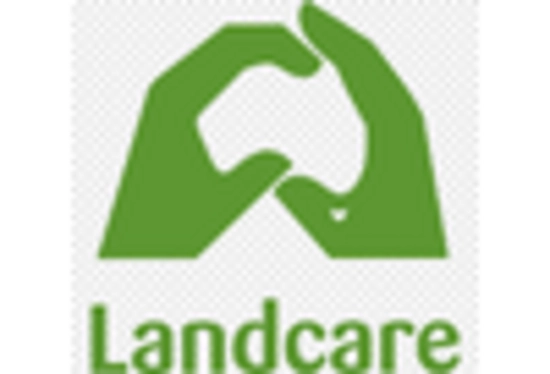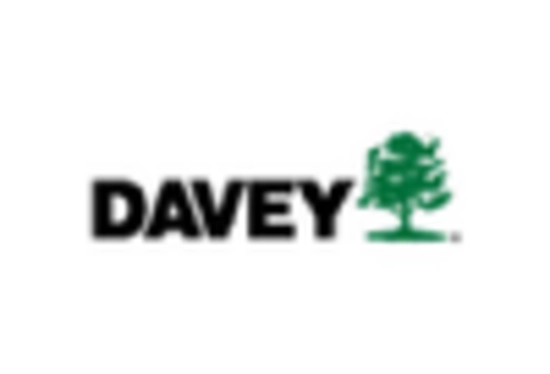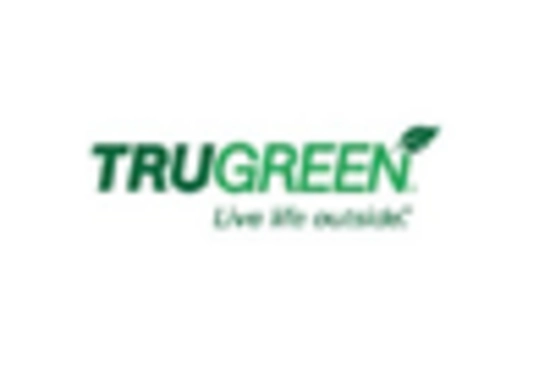Sustainability in Materials
The Outdoor Landscaping Structure Market is increasingly influenced by the demand for sustainable materials. Consumers are becoming more environmentally conscious, leading to a preference for products made from recycled or sustainably sourced materials. This trend is reflected in the growing market for eco-friendly landscaping structures, which is projected to reach a value of approximately 10 billion dollars by 2026. Manufacturers are responding by innovating with materials such as bamboo, reclaimed wood, and recycled plastics. This shift not only meets consumer demand but also aligns with regulatory pressures aimed at reducing carbon footprints. As sustainability becomes a core value for many consumers, the Outdoor Landscaping Structure Market is likely to see continued growth in this segment, as businesses that prioritize eco-friendly practices may gain a competitive edge.
Regulatory Support for Green Spaces
Government initiatives promoting green spaces are significantly impacting the Outdoor Landscaping Structure Market. Many regions are implementing policies that encourage the development of parks, gardens, and other green areas to improve urban environments. These initiatives often include funding for landscaping projects and incentives for using sustainable practices. For example, cities may offer tax breaks for developers who incorporate green roofs or community gardens into their projects. This regulatory support not only fosters a healthier environment but also stimulates demand for landscaping structures that comply with these guidelines. As urban areas prioritize green spaces, the Outdoor Landscaping Structure Market is poised for growth, with businesses that align with these regulations likely to benefit from increased opportunities.
Urbanization and Space Optimization
Rapid urbanization is a significant driver for the Outdoor Landscaping Structure Market. As urban areas expand, the need for efficient use of limited space becomes paramount. Landscaping structures such as vertical gardens, rooftop terraces, and modular outdoor furniture are gaining popularity as they maximize utility while enhancing aesthetic appeal. According to recent data, urban populations are expected to increase by 2.5 billion by 2050, necessitating innovative landscaping solutions. This trend is prompting landscape architects and designers to create multifunctional outdoor spaces that cater to both recreational and practical needs. Consequently, the Outdoor Landscaping Structure Market is likely to experience robust growth as urban dwellers seek to transform their limited outdoor spaces into functional and inviting environments.
Technological Advancements in Landscaping
The integration of technology into landscaping is reshaping the Outdoor Landscaping Structure Market. Innovations such as smart irrigation systems, automated lighting, and landscape design software are enhancing the efficiency and appeal of outdoor spaces. For instance, smart irrigation systems can reduce water usage by up to 50%, appealing to environmentally conscious consumers. Furthermore, augmented reality applications allow homeowners to visualize landscaping changes before implementation, increasing customer satisfaction. As technology continues to evolve, the Outdoor Landscaping Structure Market is expected to expand, with companies that adopt these advancements likely to attract tech-savvy consumers. This trend indicates a shift towards more interactive and efficient landscaping solutions, which could redefine consumer expectations in the industry.
Aesthetic Trends and Outdoor Living Spaces
The growing trend towards outdoor living spaces is a key driver for the Outdoor Landscaping Structure Market. Homeowners are increasingly investing in outdoor structures such as patios, pergolas, and outdoor kitchens to enhance their living experience. This shift is supported by data indicating that outdoor living spaces can increase property value by up to 20%. As people seek to create comfortable and functional outdoor environments, the demand for aesthetically pleasing landscaping structures rises. Designers are focusing on integrating natural elements and modern designs to cater to this trend. Consequently, the Outdoor Landscaping Structure Market is likely to see a surge in demand for products that blend functionality with visual appeal, reflecting the evolving preferences of consumers.

















Leave a Comment